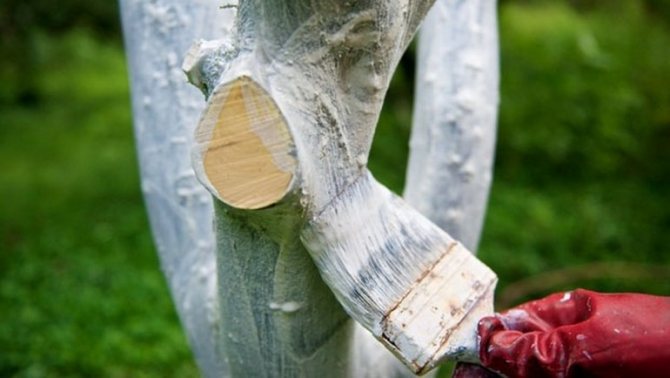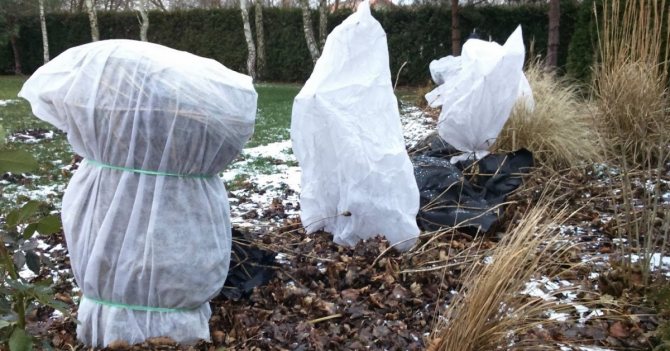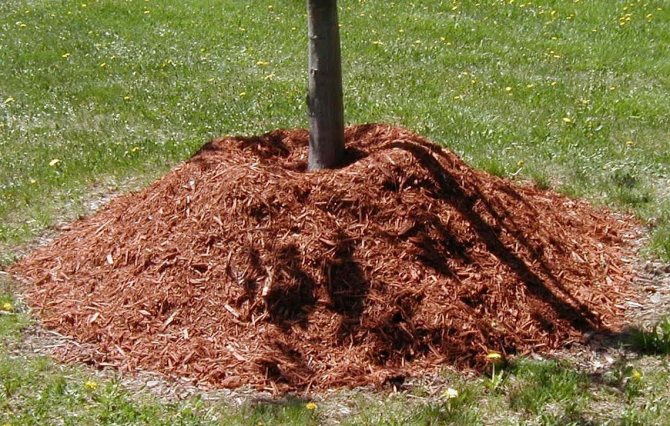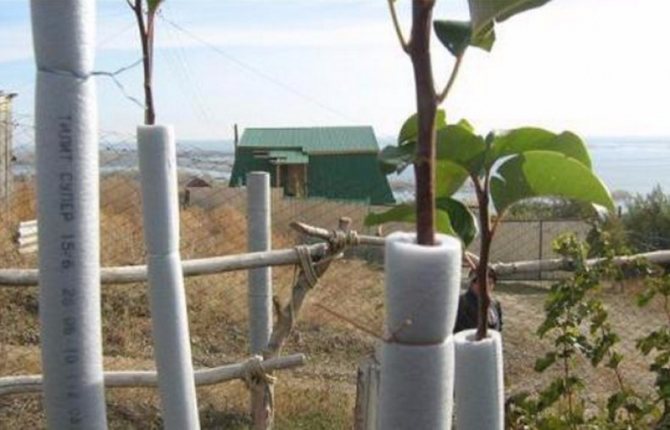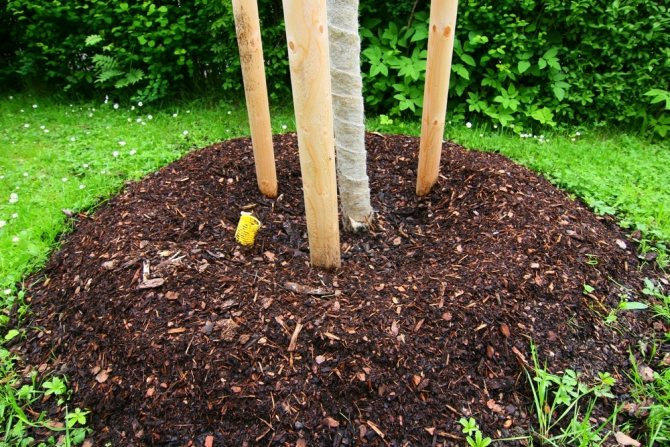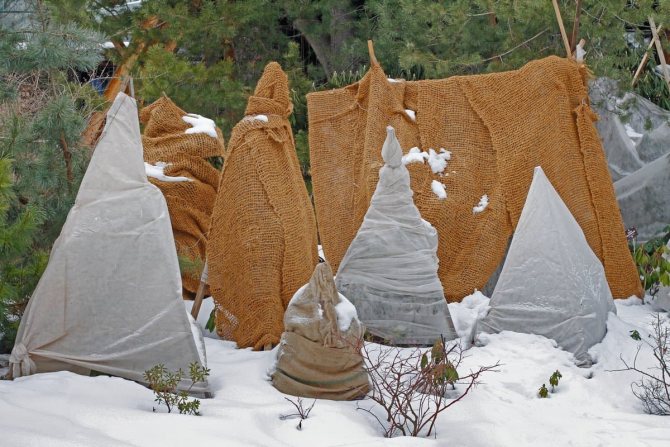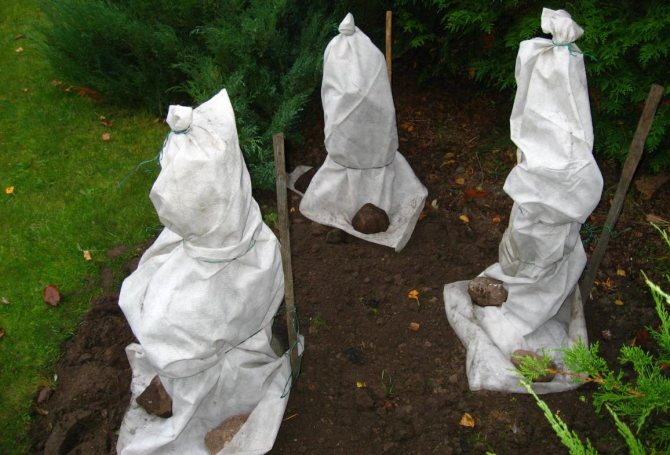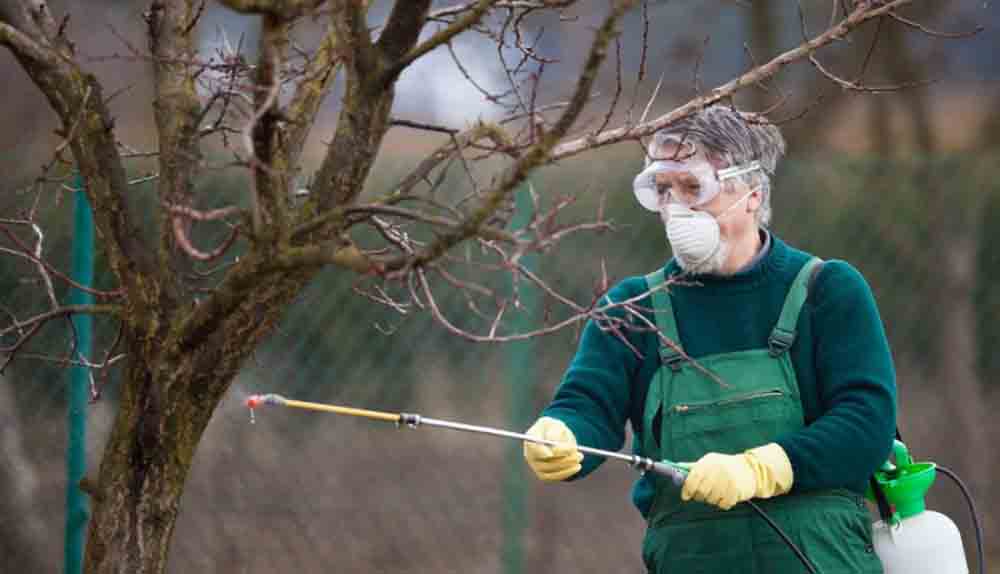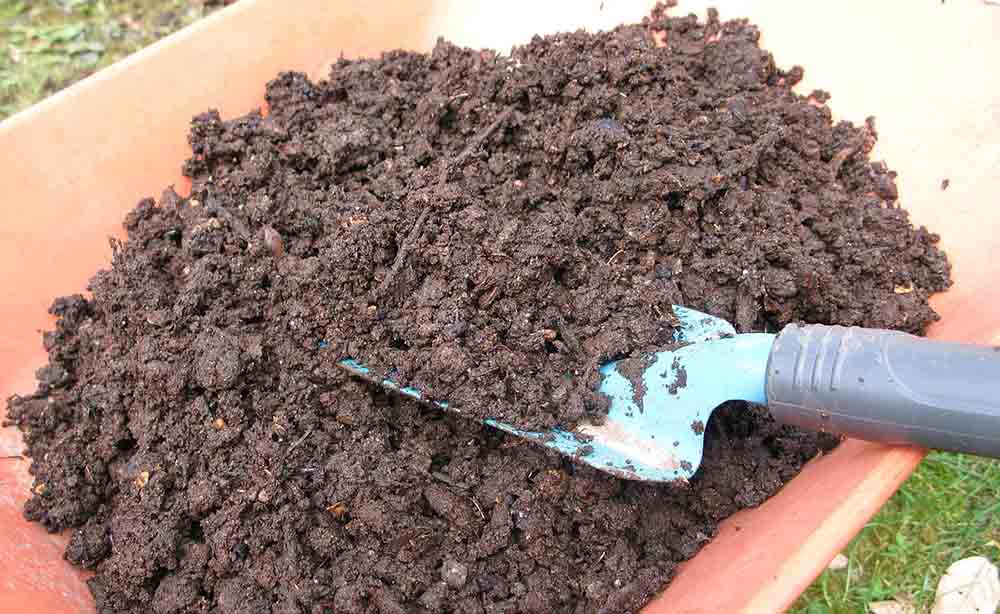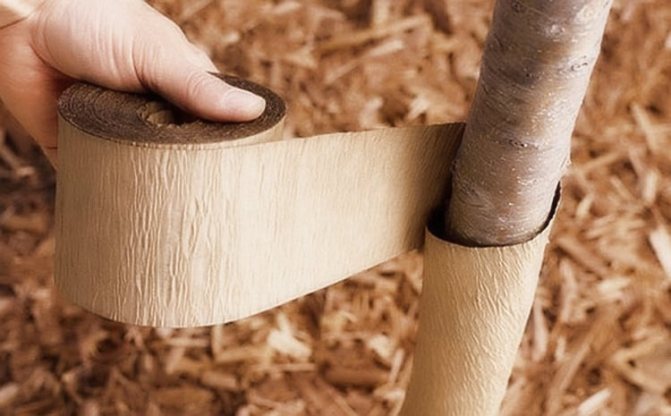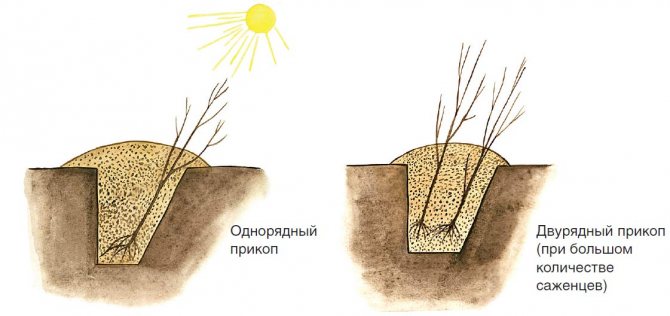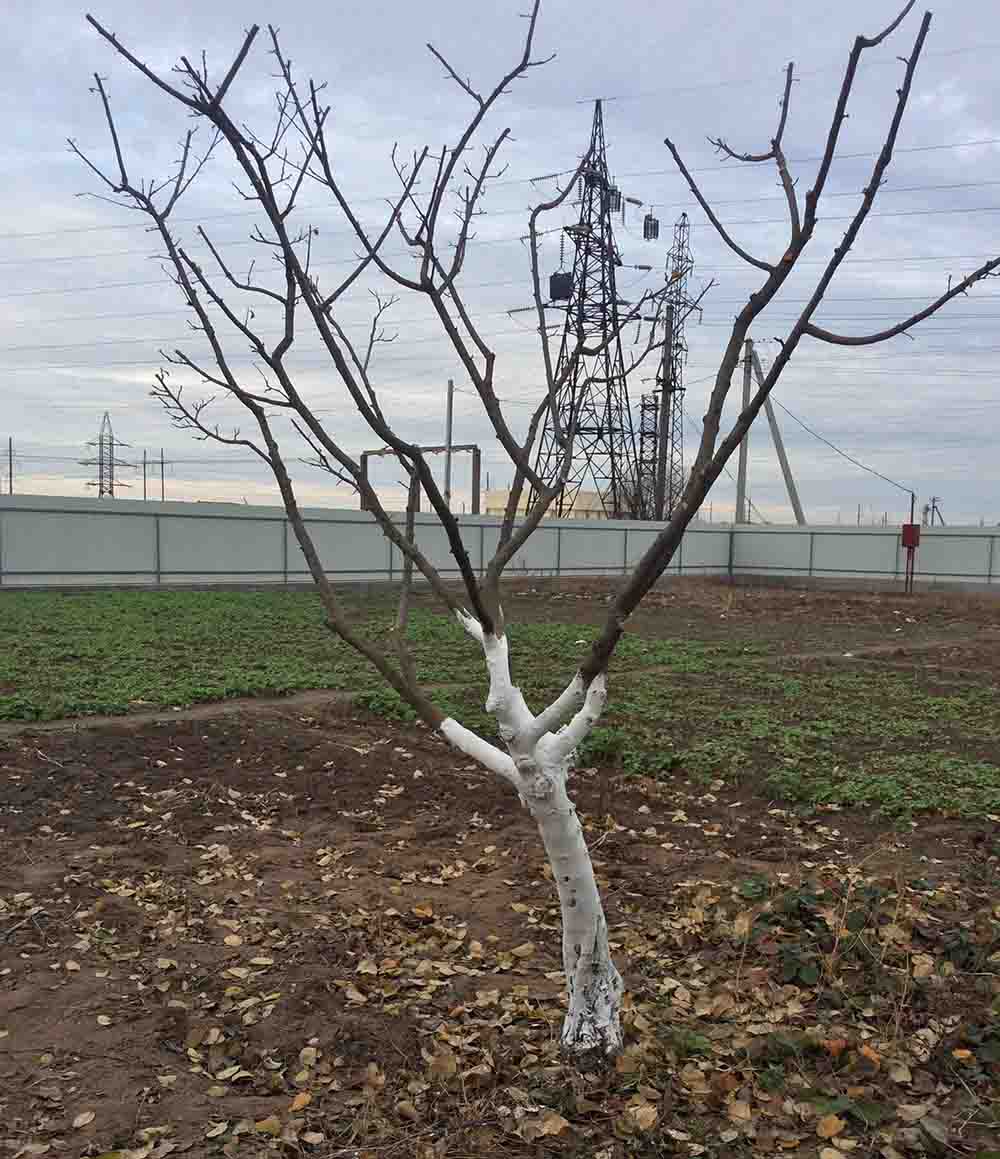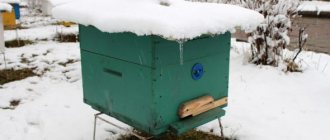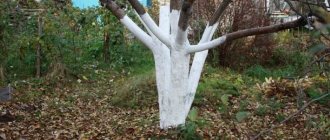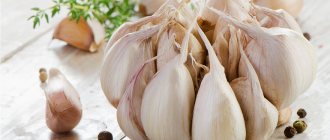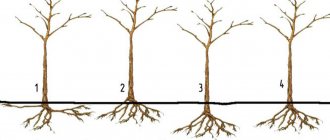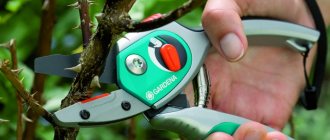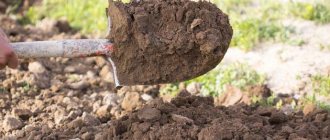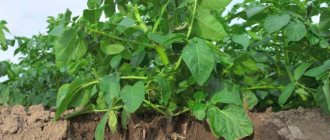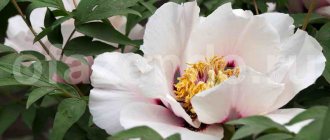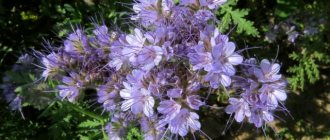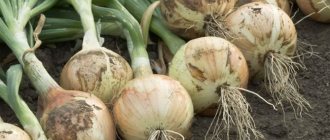Preparing the garden for winter
To prepare fruit trees and berry bushes for the winter period should be from late September - early October.
The signal for the beginning of autumn work is usually the end of the leaf fall - the complete fall of the foliage indicates that the garden culture has begun to enter a dormant phase, so you can carry out all the preparatory work in the garden.
First of all, you need to inspect all trees and shrubs and collect the remaining fruits from them. All rotten produce should be buried off-site, but not composted - carrion can be a source of pathogenic microorganisms that will multiply in the compost heap and cause the spread of infection in the garden area.
Why is it important to cover a young tree
Young fruit trees have weak protective functions. The plantation has not yet fully adapted to the new growing conditions. An additional danger is rodents. They give preference only to young seedlings. Old plantings are the last to suffer.
Planting insulation protects from the piercing wind. In the absence of shelter, the wood dries up. The spring sun can also harm a young seedling. It starts the sap flow. If the temperature is low, the plant burns the bark.
The growth of the planting and the level of fruiting directly depend on the quality of insulation. In the absence of care, sap flow may not start in the spring. The plant will have to be removed from the site. It will be impossible to restore it.
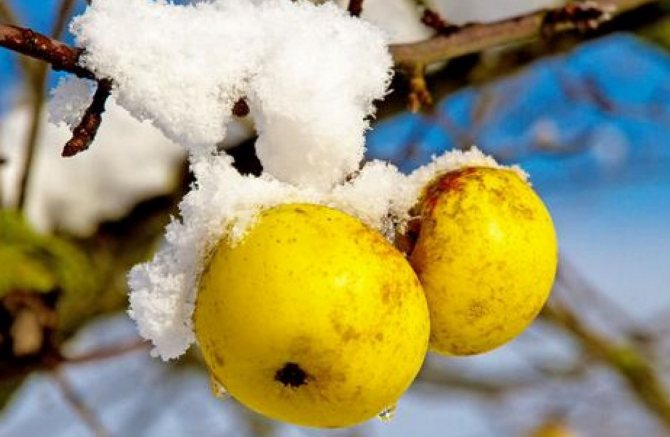
Collecting fallen leaves
After the leaves fall, it's time to collect all the fallen leaves. Although many gardeners leave it in the near-trunk circles because they believe that a layer of foliage will be protection from frost for the roots of garden crops located close to the surface of the earth.
But do not forget that it is in the fallen leaves that "harmful" bugs, their larvae, fungal spores and other pathogenic organisms can hide for the winter, which will wake up with the arrival of spring and will "eat" the aboveground part of the plants.
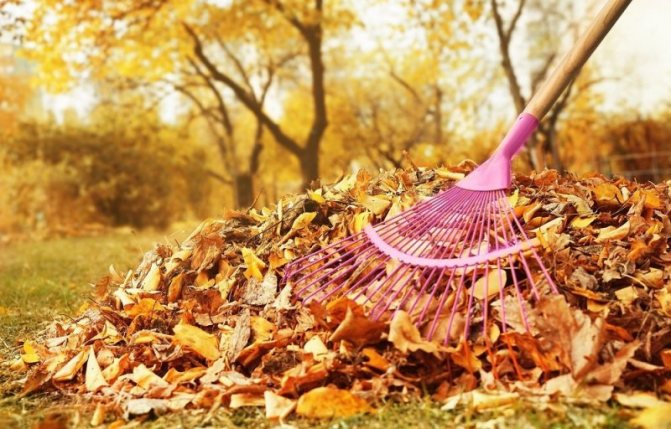

Therefore, it is better to carefully collect all the leaves with a rake from the trunk circles. If trees and shrubs were not damaged during the season by any diseases and were not attacked by pests, then all the collected fallen leaves can be piled into a compost heap. Otherwise, the foliage is removed from the garden and immediately burned.
Also, you should clean the trunks from the remnants of vegetation and from carrion.
![Tinkoff (Debit Card) [CPS] RU](https://bgn.imadeself.com/wp-content/uploads/tinkoff-debetovaya-karta-cps-ru3.jpg)
![Tinkoff (Debit Card) [CPS] RU](https://bgn.imadeself.com/wp-content/uploads/tinkoff-debetovaya-karta-cps-ru3.jpg)
Plant hardening, soil mulching
The process of hardening the root system is very important, since many plants in winter can disappear from frost, especially if the winter was fierce, but snowless.
Hardening is carried out by a very simple method that even an inexperienced summer resident can do. You just need to remove a layer of soil near the trunk of a tree, no more than 3-5 cm, and store in a dry and cool (but frost-free) place until the first frost. In this case, it is important to harden exposed roots with cold, but not to miss the severe frosts, otherwise you can harm. With the onset of the first frosts, the earth returns to its place.
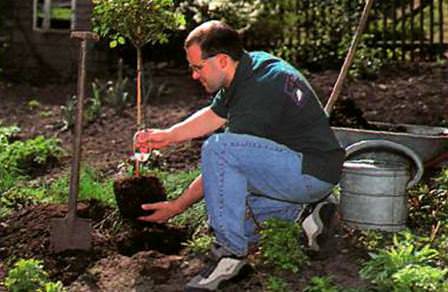

Thanks to this process, the root system will gradually get used to severe cold weather and will react to them in a more neutral way, freely surviving even winters without snow.
Hardening must be carried out if you want to protect apples and pears from the winter cold. Other types of fruit trees do not react so strongly to frost.
Preparing the garden for winter is also done by mulching stone fruit or apple trees, which are grafted onto a semi-dwarf rootstock. Soil mulching is carried out with any dry bulk material that is available in the country. It will be most correct to carry out mulching closer to mid-late November.
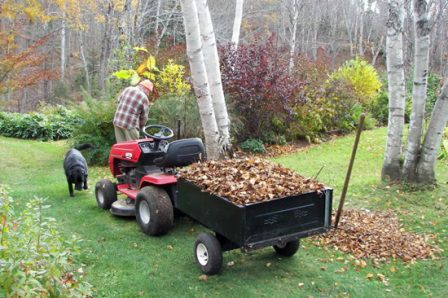

Autumn tree care in the garden
In order to get good yields every year from fruit trees, it is necessary to carry out agrotechnical measures throughout the season, and before the onset of winter, carry out a full range of such measures so that the trees winter successfully.
The first step is to remove all dead bark, mosses and lichen. It is in them that "harmful" bugs and their larvae usually hibernate. So that they do not begin to feed on foliage and other parts of plants in the spring, we must not leave them a single chance. All fishing belts should be removed in late autumn. Such paper belts are immediately burned, and cloth belts should be washed, dried and hidden at home until the beginning of spring.
Caring for an orchard in autumn - video
Pruning fruit trees in autumn
Pruning fruit trees should be carried out in dry weather for a couple to three weeks before the onset of frost. It is necessary to cut out all damaged, dried, diseased or pest-affected shoots, as well as part of the branches growing inside the crown. The pruning procedure is carried out with a sharp, disinfected garden tool (pruning shears or a hacksaw). Places of cuts are disinfected with copper sulfate, which is diluted as follows:
dissolve 2 tsp in 2 liters of water. preparation), then covered with garden var. You can also use oil paint.
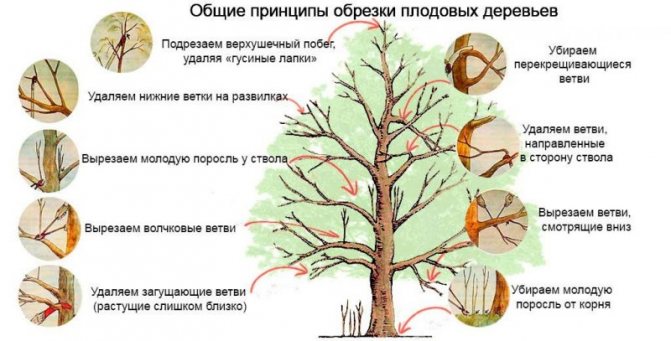

Spraying against diseases and insect attacks
In autumn, preventive treatments of trees against diseases and pests are most often carried out.
Important!
If signs of mold are seen on the crown of fruit trees, then they should be treated with Bordeaux liquid (3% solution).
Spraying fruit trees, garden processing - video
To avoid the appearance of coccomycosis, scab, powdery mildew and other diseases, you need to treat the crown of trees with a urea solution. Prepare it as follows:
dissolve 500 g of the drug in a bucket of water. The soil in the near-trunk circles is also treated with such a working solution, only more concentrated: 1 kg of the substance must be dissolved in a bucket of water.
It is urea that helps to effectively cope with the "harmful" bugs hiding in the bark of trees or in the soil for the winter.
Pests in the garden!
How to deal with a scoopHow to get rid of a wirewormHow to deal with a bear in the garden and in the garden
Pests for the winter can hide in the upper layer of the soil, so the autumn digging of near-trunk circles helps to cope with them - the insects have already "fallen into hibernation", when digging they end up on the surface and freeze in frost.
Top dressing
In the autumn period, the following organic matter is usually introduced under the fruit trees:
- slurry, which is diluted in a ratio of 1:10;
- compost, which is applied for plants under 7 years old in the amount of 2 kg per square, and for older trees - up to 3 kg;
- wood ash, which is bred as follows: 100 g of the substance is diluted in a bucket of water;
- humus in the amount of 5 kg for each square of the area.
Important!
In the autumn, nitrogen fertilizers should not be applied under garden crops, which activate the growth of the vegetative mass.
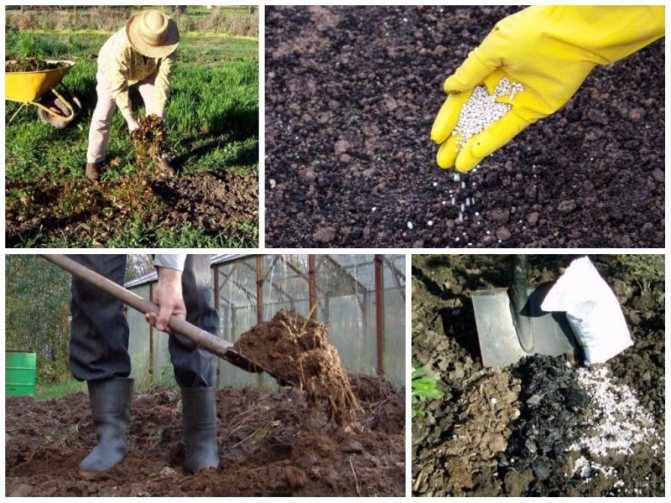

You should also apply fertilizers containing phosphorus and potassium to the trunks in the autumn. These mineral elements strengthen the root system, weakened during the fruiting period, help trees to get stronger and better endure frosts.
The rate of application of these substances (per square of area) for trees from 1 to 10 years:
- 35 g superphosphate;
- 20 g of potassium chloride.
INTERESTING!
Diseases and pests of raspberries in the garden
For horticultural crops older than 10 years, for each square of the area, they bring:
- 80 g superphosphate;
- 40 g of potassium chloride.
Under cherry and plum trees, 60 g of superphosphate and 40 g of potassium sulfate are added, which are diluted in a bucket of water. For each adult plant, 40 g of working solution should be applied.
Autumn water-charging irrigation
Before the onset of cold weather, it is imperative to add enough moisture to the tree trunks to saturate the roots with moisture - this will prevent the root system from freezing during the winter cold.
At least 5 buckets of water should be added under each adult tree, and it is brought in gradually - about 15 liters every 60 minutes. As a result of such water-charging irrigation, the soil should be saturated with moisture to a depth of about 1 m. The water temperature should be higher than the ambient temperature by about 4-5 degrees Celsius.
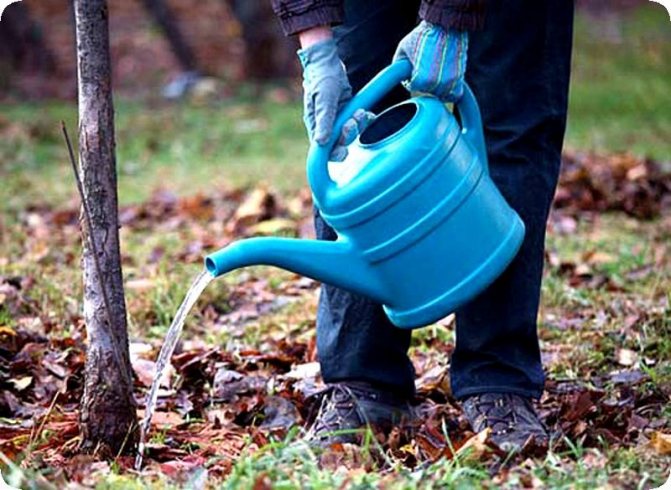

After all the water is absorbed into the soil, you need to mulch the trunk circles with one of the following substances:
- peat;
- spruce branches;
- humus;
- compost.
This procedure allows you to retain moisture in the soil, and also protects the root system from freezing.
Whitewashing tree trunks in autumn
Usually, tree trunks and bases of lower branches need to be whitened in the autumn to protect them from "harmful" bugs and to protect them from sunburn in early spring.
To do this, you can use whitewash purchased in gardening stores, or prepare it yourself. For this, 3 kg of lime and 0.5 kg of copper sulfate are diluted in a bucket of water.
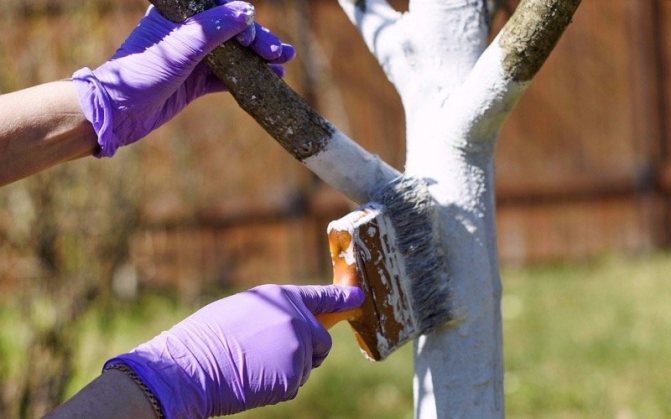

Removing branches
Before the onset of cold weather, it is better to cut out old branches. The apple tree is given the appearance of a bush by cutting off old branches and shortening live and young branches by about 1/3 of the length. The optimum height of the apple tree is 3-3.5 m.
Branches that intersect with each other are also cut to prevent thickening of the crown, trying to select damaged branches. All cuts are made with a hacksaw or pruner at an acute angle. The cut site is covered with oil paint or garden broth.
General scheme for pruning an apple tree.
Preparing the vineyard for winter
Grape bushes are prepared for winter in the same way as fruit trees - they carry out water-charging irrigation, dig up the root zone of the vines, apply top dressing, prune and cover the vines for the winter.
After leaf fall, the vines are pruned, treated against pests and diseases with a solution of ferrous sulfate (3%). Then the grape bushes are covered with spruce branches, straw or other covering materials.
Preparing grapes for winter, pruning and laying - video
The best way to wrap the trunks, and what materials are needed
Warming of young trees for the winter season occurs with gardeners using different methods and materials. There are no uniform standards, but there are favorite methods that have been used for decades, by the older generation and have proven their suitability today. The new generation is inclined to think more broadly, and all the time are inventing new means that are not always useful for plants.
Shelter with natural materials
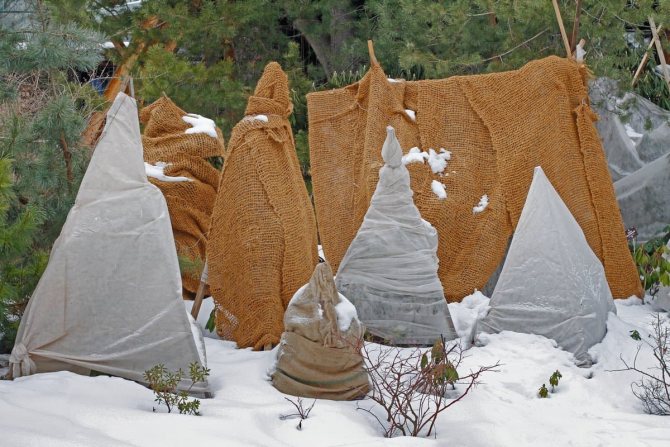

Wrapping wood with natural fabrics such as burlap or jute has its pros and cons. The advantages of this method include the following factors:
- the fruit trunk under the tissue will be able to breathe, the bark is actively saturated with air, it is perfectly insulated;
- before wrapping the burlap around it, it is advisable to soak it with a solution against pests and rodents, this will additionally scare them away.
Autumn care of shrubs and preparation for winter
After the foliage falls off the berry bushes, they are sanitized pruning. At the same time, extra, sick, weak, dried up or damaged shoots are cut out. Oblique cuts should be done above the buds, directed towards the outside of the bush.
In black currant bushes, all branches older than five years of age are also removed, in white and red, shoots older than 8 years are cut off at the root. On such shoots, ovaries are no longer formed; after their removal, all nutrition goes to the fruiting shoots.
On a note!
After pruning, fertilizer containing phosphorus and potassium should be added under each bush. Usually, a tablespoon of superphosphate and any potassium salt is added under each shrub.
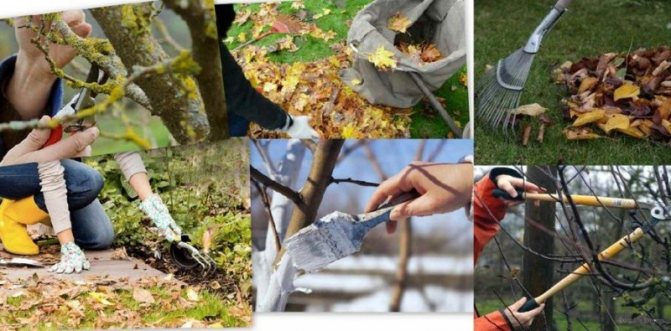

Gooseberries are also pruned in preparation for winter. All bushes over 6 years old are subject to pruning. In the process of pruning, all old, diseased and dry branches are removed, and root growth is also removed. After pruning, 2 tbsp is closed in the root zone of the plants. l. superphosphate to a depth of 5 cm. You should also add 1 tbsp. l. potassium salts and 200-300 g of wood ash.
In non-remontant varieties of raspberries, all last year's shoots are removed at the root in the fall, and young shoots are bent to the soil and covered with spruce branches or other covering material. Also, in the fall, under each raspberry bush, you need to add rotted manure - up to 5-6 kg for each square of the area.
If all autumn procedures for caring for garden crops are carried out correctly and in a timely manner, then next season they will thank their owners with abundant fruiting.
Protection of seedlings from rodents
This process is very simple, but it will take some time, because it all depends on the number of trees in the garden.
Protecting the garden from rodents can be arranged in the simplest way - by winding the trunk with old tights, spruce branches or kraft paper. If there is an opportunity to spend a little money for better protection, we recommend that you tie hardwood for the winter with tar paper, roofing felt, reed mats or special plastic gratings that qualitatively limit the access of rodents to the trunk.
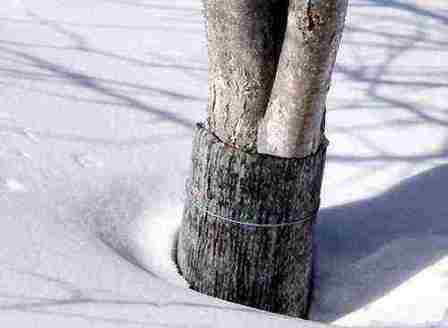

It is imperative to remove the winding of the boles with the first heat, so that the bark of the trees does not undermine and does not acquire unpleasant diseases.
Features of the shelter of columnar apple trees
The columnar apple tree is a fairly young apple variety that appeared in the 60s of the 20th century in Canada and is now gaining more and more popularity. People fell in love with this variety for the great taste of the fruit, ease of growing, compact size, as well as for its unusual and decorative appearance that fits perfectly into the design of almost any private garden plot. The columnar apple tree got its name from its unusual column-like shape. They have practically no side branches, and the entire crop is located directly along the trunk. Also a distinctive feature is dwarf growth.
Covering columnar apple trees has its own characteristics associated with their size and crown shape. One of these features is that dwarf apple trees are more susceptible to freezing than their taller relatives. This is due to the fact that near the ground, or rather, near the snow cover, frosts are more severe than at a certain height. Therefore, apple trees of this variety require increased attention when the cold weather sets in.
Also, in columnar apple trees, the apical bud suffers from frost. Struck by low temperatures, it gives two or three branches, which later turn into independent trunks. Thus, the columnar appearance of the apple tree is disturbed.Therefore, in order to protect it and maintain the shape of the column, not only the trunk, but also the entire crown of the tree, often needs to be covered. To do this, the apple top is insulated with a rag or film, putting on a covering material on top.
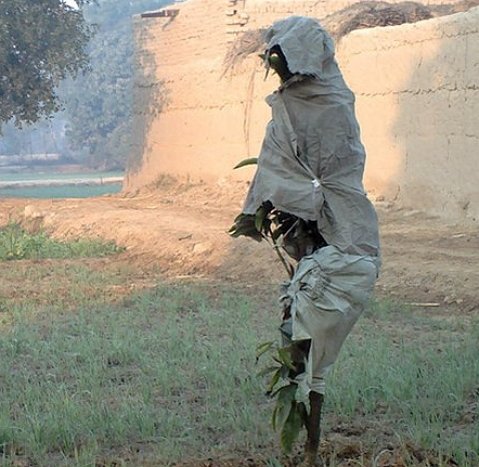

Experienced gardeners cover the columnar apple tree with dense material in order to preserve its original shape
It is also recommended to tie a support to the apple tree to make it resistant to strong gusts of wind.
So that young trees do not die, first of all, the space near the roots should be covered. Spruce branches, sawdust or shavings, straw and other materials are suitable. Rodents will be scared off by nylon stockings or old rags. The higher part of the trunk, which the rodents can no longer reach, should be wrapped in newspapers or toilet paper. To avoid getting wet and so as not to be ripped off by the wind, make several layers.
Saplings
It is undesirable to plant seedlings of columnar apple trees before winter - such a tree will not have time to properly take root and will not be able to fully develop. The upper kidney has a great chance of dying off under the influence of frost. It is best to buy and plant such apple trees in the spring. If the seedlings were bought in the fall, they need to be covered in specially dug grooves. This is done in the same way as with the seedlings of tall varieties of apple trees.
The seedlings are laid out in a prepared ditch and covered with insulating materials on top. It can be spruce branches, straw, reeds, unnecessary old linoleum, roofing felt, cardboard.
In the spring, the seedlings must be checked and aired so that overheating does not occur and the debate process does not begin.
How to cover columnar apple trees in different regions?
If a columnar apple tree is planned to be planted in the northern regions, which are characterized by a large amount of precipitation, snow should be used as a covering material. The apple tree will easily survive the northern cold, if as much snow as possible is heated to the trunk.
If planting is planned in areas for which winters with little snow are typical, you need to prepare for frost as soon as the trees are planted. For this, apple trees are located in trenches at a certain angle, focusing on the movement of the sun. The goal is to achieve the maximum amount of light on the seedlings.
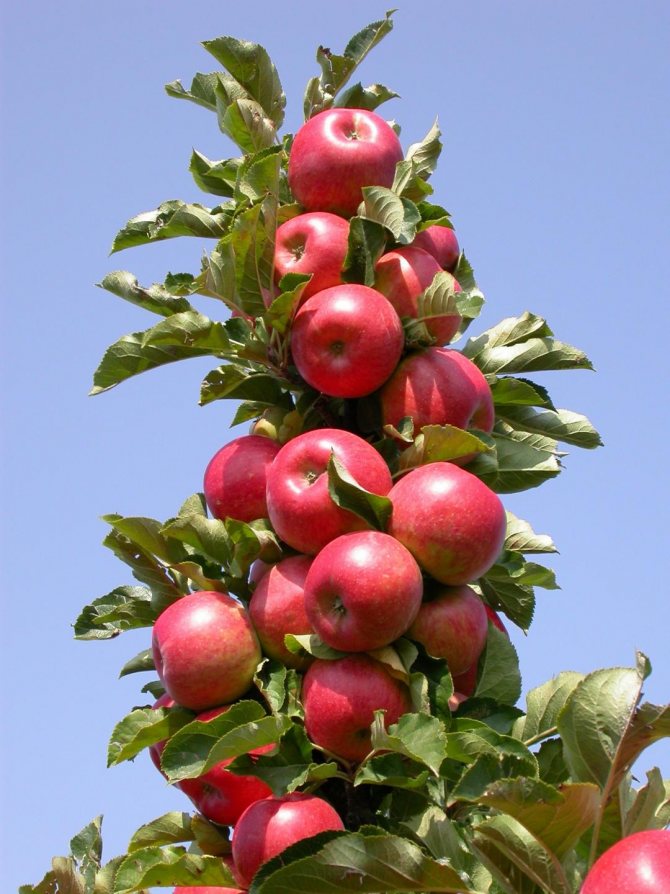

The columnar apple tree, as a result of the correct winter shelter, will delight you with its beautiful appearance and juicy, sweet fruits

